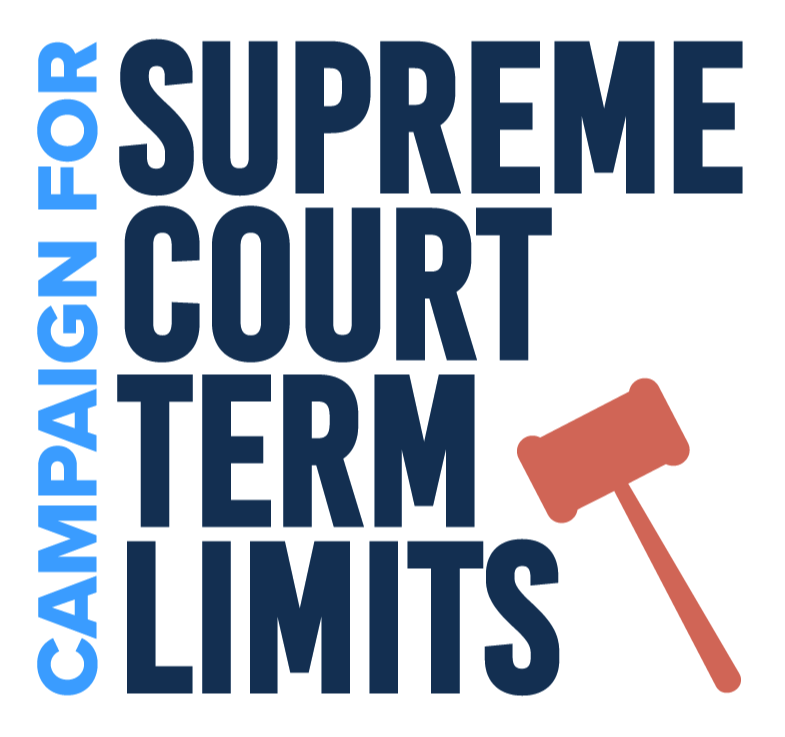Why Does SCOTUS Have Life Tenure And No Enforceable Ethics Rules?
Today President Biden is proposing that Supreme Court justices no longer serve for life and that the justices are subject to some form of enforceable ethics code.
Before diving in to the merits of these reform proposals, it’s instructive to understand where the status quo comes from.
Life tenure:
 The origins of judges holding their office “during good behaviour” is debated in the literature, but the bottom line is it was well established by the time the British Parliament codified the idea into a law in 1701. Later in the 18th century, in the run up to the Revolutionary War, King George III sought to fire colonial judges who didn’t toe the monarch’s line, hence the reference to judicial tenure in the Declaration of Independence (“[George III] has made Judges dependent on his Will alone, for the tenure of their offices…”).
The origins of judges holding their office “during good behaviour” is debated in the literature, but the bottom line is it was well established by the time the British Parliament codified the idea into a law in 1701. Later in the 18th century, in the run up to the Revolutionary War, King George III sought to fire colonial judges who didn’t toe the monarch’s line, hence the reference to judicial tenure in the Declaration of Independence (“[George III] has made Judges dependent on his Will alone, for the tenure of their offices…”).
State constitutions that predate the U.S. Constitution, like Massachusetts‘ from 1780, included good-behaviour clauses in their judiciary sections, which were then carried into the national one drafted in 1787.
Our take: Life tenure may have made sense in pre-colonial times, but, Trump v. U.S. notwithstanding, we haven’t had a king for almost 250 years now, so a more modern view of judicial appointment should prevail. After all, every democracy younger than ours — i.e., every democracy — has tenure restrictions for its top judges. No one in a democracy (or in a republic) should hold as much power as the justices have arrogated to themselves for 30, 35 or 40 or more years, as the current system permits.
Ethics:
We’ll start in modern times, with Justice Fortas being pushed to resign in 1969 after reports surfaced that he had accepted thousands of dollars in cash from a shady character. Following that, the Supreme Court implemented its own financial disclosure framework that predated Congress’ by several years. The Court also lobbied to be omitted from the ABA’s Model Code of Conduct, which the lower courts adopted with a few modifications in 1973.
The next year Watergate came along, and accountability reforms government-wide became more en vogue. The question was whether to keep them limited to the executive, or to Articles I and II, or to go bigger.
As Sen. Sam Nunn (D-Ga.), the lead author of what after several turns became the SCOTUS-exempted Judicial Conduct and Disability Act of 1980 (JCDA), wrote in 1977: “It would be shortsighted to focus current reform efforts on ensuring that members of the executive and legislative branches of government conform to legal, moral and ethical standards of the highest order and, at the same time, to ignore the conduct of members of the judiciary.”
What’s more, Sen. Nunn’s bills, initially called the Judicial Tenure Act, explicitly included the justices in the judicial conduct rubric — namely that complaints could be filed against them, that meritorious ones would be investigated by a judicial committee and that discipline could be imposed.
Nunn again: “As far as could be determined, no persuasive legal argument could be made that Supreme Court Justices should be held to a lower standard of judicial conduct.”
The bill would have established a Council on Judicial Tenure, comprising one judge from each circuit, who could receive complaints against judges and justices and based on their severity, either dismiss them and move for an investigation. This idea is similar to what Justice Kagan pitched during the Ninth Circuit conference on Thursday.
Two intervening events changed the trajectory of SCOTUS inclusion. First, the Judicial Conference in 1975 released a statement saying that the justices should be dropped from the bill (never mind that, during the debate around the bill, “No less jurists than Justices Rehnquist, Burger and Blackmun have expressed the opinion that the principle represented by the Judicial Tenure Act is constitutional,” per Nunn, and we’re fairly confident that under today’s Senate leadership, at least on the Democrats’ side, and under today’s Judicial Conference, lawmakers would not make that concession.)
Second, the Ninth Circuit, of its own volition decided in 1978 to implement its own judicial discipline framework limited, of course, to judges within its jurisdiction. That plan worked out fairly well in lawmakers’ and judges’ view, and lawmakers ended up swapping in the Ninth Circuit’s framework for their own in 1979-1980, which is a shame, especially as the Ethics in Government Act, which made disclosures an annual requirement and was signed into law in 1978, explicitly included the justices.
The bottom line: the idea that SCOTUS can’t be part of an enforcement framework moving forward like the JCDA is bunk.